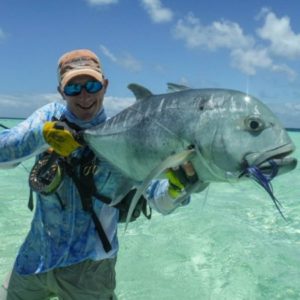As the long northern winter slowly gives way to spring, excitement is building among anglers across the globe for the start of the 2025 Icelandic salmon fishing season. With rivers poised to open in June, early indicators point towards a potentially promising year ahead, though—as ever in this unpredictable sport—much depends on nature’s hand.
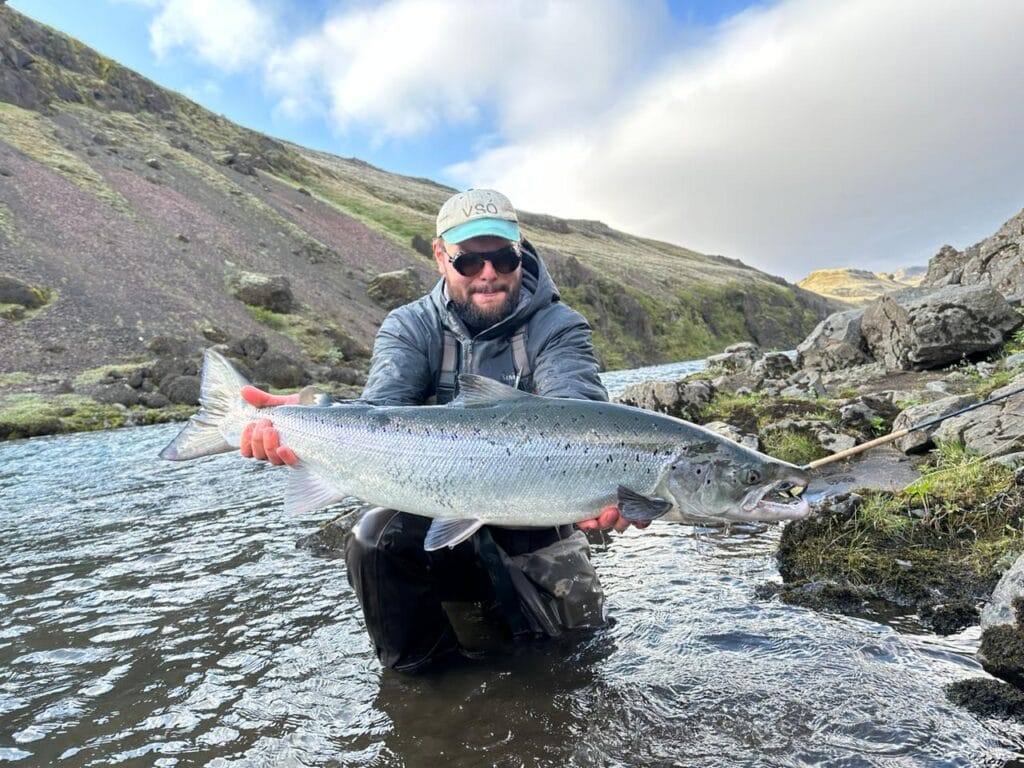
Snowpack and Water Levels
One of the key factors influencing Iceland’s salmon season is the winter snowpack, which determines river levels during the critical early weeks of the season. Following a relatively mild and variable start to winter in late 2024, heavier snowfall finally arrived from late January through to March across much of the island. In the north and west in particular, prolonged periods of Arctic weather saw consistent snow accumulation across highland regions that feed many of Iceland’s premier salmon rivers.
The spring thaw, now underway, is expected to release a steady and gradual flow of meltwater, which bodes well for river levels into early summer. Crucially, there has not been an abrupt or early melt this year—something which can flush out rivers too quickly and leave them dangerously low in July. Instead, forecasts suggest a more controlled melt pattern. Hydrologists and river managers are optimistic that this will result in stable flows throughout the early part of the season, providing the ideal conditions for early June running salmon to enter the rivers and settle into the pools.
This is especially good news for some of Iceland’s early-opening rivers such as the Blanda, Nordurá, and Laxá í Kjos, where strong, cool flows are essential to kick-starting the season with good fishing. While river levels can fluctuate wildly throughout the Icelandic summer, this year’s snowpack offers confidence that anglers arriving in June will be greeted by well-charged rivers full of promise, and fishermen in July and early August will have water.
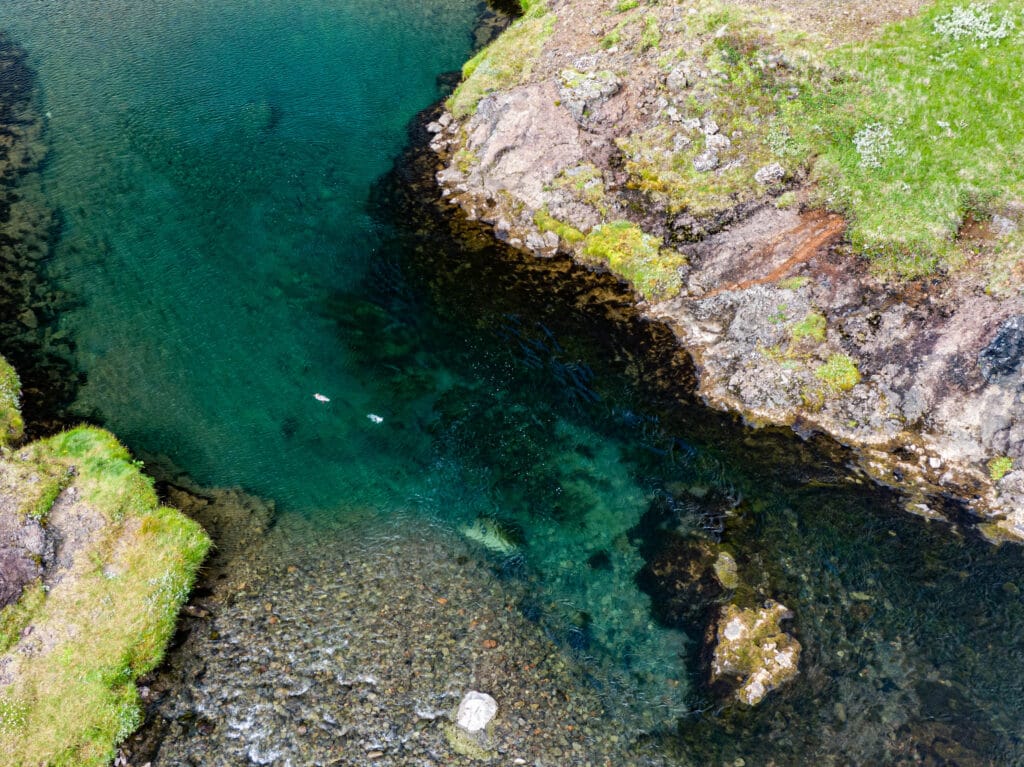
Last Autumn’s Spawning Season
Looking back to the 2024 spawning season, reports from across the country were largely encouraging. October and November brought cool, stable conditions that enabled many salmon to reach their spawning beds without undue stress or disruption. Water temperatures remained within optimal ranges for egg survival, and there were no significant flood events during the peak of spawning activity—factors that have not always aligned in recent years.
In many of Iceland’s most iconic systems, such as the East Ranga, West Ranga, and the famous Laxá í Adaldal, river watchers reported high numbers of fish on the redds, particularly grilse and small multi-sea-winter salmon. Encouragingly, in some catchments, there was also a notable increase in sightings of larger fish, indicating a healthy mix of year classes. While complete spawning surveys will not be finalised until later this year, preliminary data suggests that recruitment for future seasons is on solid ground.
Efforts by river associations and the Icelandic Institute of Freshwater Fisheries to manage catch and release practices, limit overfishing, and preserve genetic diversity are beginning to show results. Increasingly, conservation-minded angling is viewed not as a burden but as a responsibility shared by guides, guests, and lodge operators alike. As Iceland continues to balance tourism with ecological preservation, the 2024 spawning results give cause for cautious optimism.
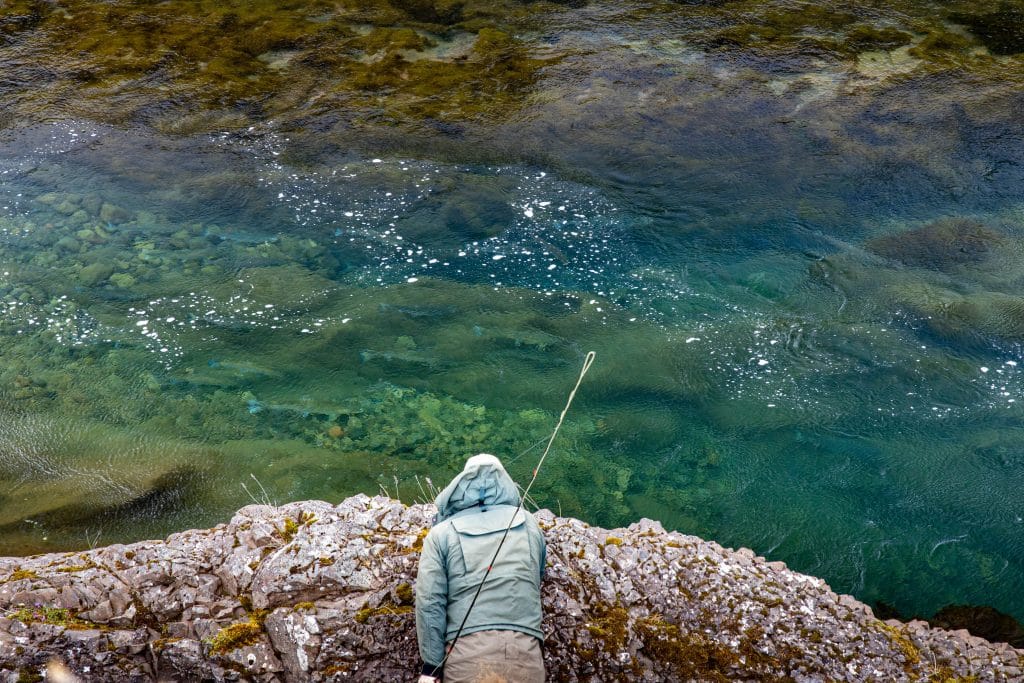
The Season Ahead: Anticipation Builds
The countdown to June has begun in earnest. With river conditions looking favourable and spawning success from last year pointing towards healthy fish stocks, expectations for the 2025 season are high.
The first rivers to open their beats in June will be the dependable early starters—such as the Nordurá, Blanda, and Laxá í Kjos—each known for producing good runs of fish in the opening weeks. These rivers, which benefit from cold, highland-fed headwaters, tend to offer the first substantial opportunities to cast at fresh Atlantic salmon in Europe. For many international anglers, the ritual of arriving in Reykjavik in early June, travelling to a familiar lodge, and stepping into a cold, clear pool on opening day is a moment of deep significance.
As one of the first rivers to open, the Nordurá in particular has earned a reputation for delivering exceptional early-season fishing. With its combination of waterfall-obstructed pools and long, fish-holding glides, it often sees good numbers of fish by mid-June. Similarly, the Blanda—fed by glacier melt and known for its flows—can produce excellent early fishing, especially when the weather remains cool and water levels stay consistent.
Further south, the Ranga rivers (East and West) typically open later, but due to their reliance on hatchery-augmented stocks, they provide consistent action well into August. The Rangas have built a strong following among fishermen who seek steady catch rates and large average fish.
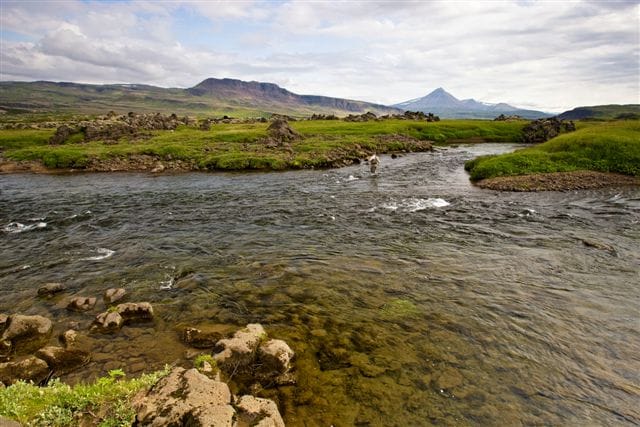
Evolving Tactics and Technology
As always, Icelandic salmon fishing requires flexibility, finesse, and an appreciation for subtle tactics. In recent years, there has been a steady shift toward lighter rods, smaller flies, and more delicate presentation—especially in low water conditions. Anglers are now more prepared than ever, arriving with switch rods, micro-tube flies, and even single-handed setups for the more intimate stretches.
The embrace of modern technology is also changing the experience. Real-time water level data and fish counter telemetry are now part of the high-end angling toolkit in Iceland. While nothing replaces the knowledge of a seasoned guide, the integration of tech into the sport enables leaseholders to carefully monitor temperatures and oxygen content in the water.
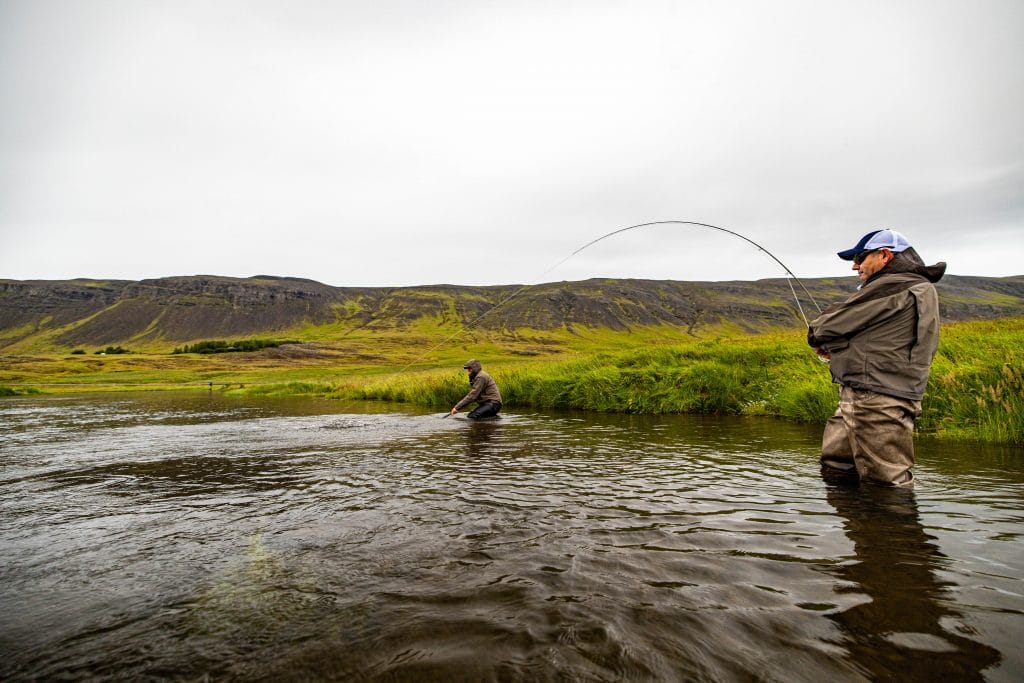
A Season of Hope and Heritage
There is something uniquely captivating about salmon fishing in Iceland. The stark beauty of the landscape, the crystalline waters, and the presence of wild, ocean-returning fish combine to create an experience that borders on the mythical. It is unlike salmon fishing anywhere else in the world and there is still an abundance of wild salmon running its rivers under the watchful eye of their Icelandic stewards. The style of fishing is unique; light tackle and small flies where often sight fishing is the norm. For those of us who have spent many hours casting blind across water that could be empty, being able to look into a pool and see numbers of fish is a refreshing change.
In reflection 2024 was a good season and the catch statistics showed a healthy increase on the 2023 with many rivers up by 35% or more. As the 2025 season looms, all the elements appear to be aligning for a potentially special year. Solid snowpacks, stable river levels, strong spawning and grilse runs in 2024, and increasing focus on sustainability together set the stage for a rewarding few months ahead.
There are still a handful of spots left if you would like to chase the silver tourist in Iceland this year, click HERE for a run down of the latest availability.
When that first salmon takes a fly in the early hours of a June morning, somewhere under a backdrop of volcanic peaks and Arctic sky, it will mark not just the beginning of another season—but a celebration of everything that makes Icelandic salmon fishing one of the world’s great fishing pursuits.
For more details on fishing in Iceland please do not hesitate to contact Peter McLeod or Alex Jardine or call our office on +44(0)1980 847389.

